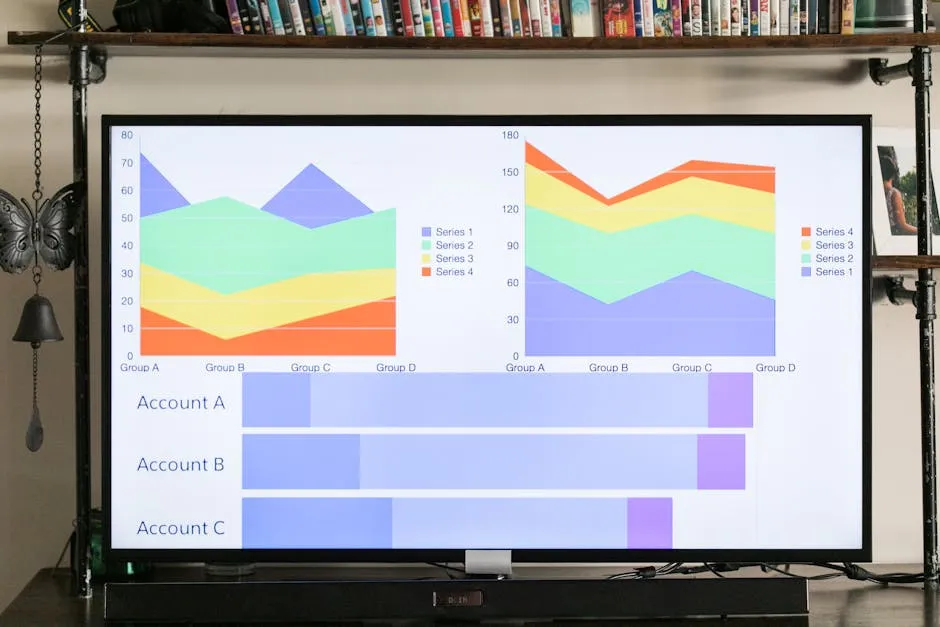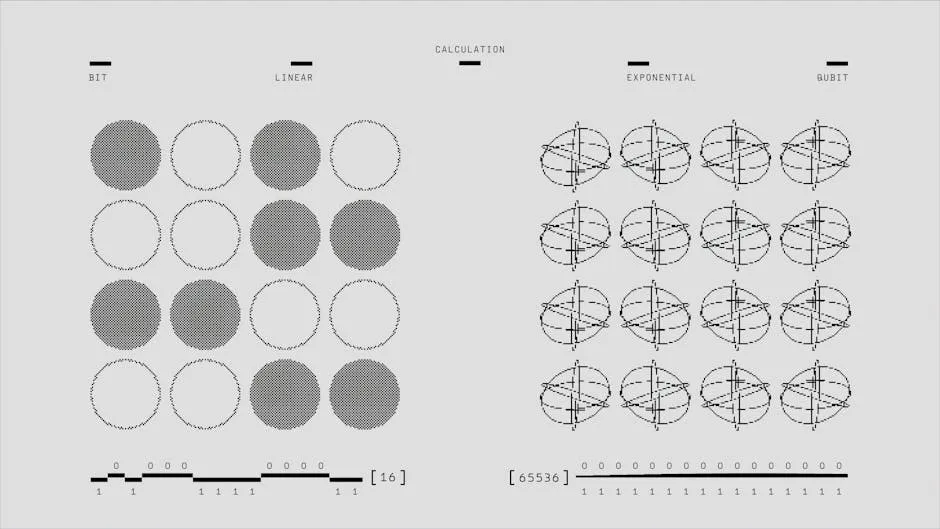Introduction
Data visualization is crucial for understanding complex information. Bar graphs are powerful tools that present data in a clear and concise manner. They help visualize comparisons and trends effectively. In this article, we’ll discuss features, customization options, and best practices for using bar graph makers. Learn more about statistical learning with Python and how it relates to data visualization.
Understanding the importance of data visualization techniques can enhance your ability to present information effectively. an introduction to statistical learning with python book length
Summary and Overview
A bar graph visually represents data using rectangular bars. Each bar indicates a specific category, and its length or height corresponds to the value it represents. These graphs are widely used in various fields, such as business, education, and research, to compare different datasets. Using a bar graph maker simplifies the process of creating these visuals. Online tools enable users to design professional-looking graphs quickly and easily, without needing advanced software skills. This accessibility makes data representation more efficient, allowing anyone to communicate insights effectively.

Speaking of making things easier, if you’re looking to organize your thoughts or brainstorm ideas, consider using a Color Picker Tool. It can help you select the perfect colors for your graphs, ensuring they are both visually appealing and informative!
What is a Bar Graph?
A bar graph is a chart that displays data with rectangular bars. Each bar represents a category, making it easy to compare values. The height or length of a bar indicates the quantity of the category it represents. Bar graphs have two axes: the x-axis (horizontal) shows categories, while the y-axis (vertical) shows values. This format is particularly useful for comparing multiple items or showing changes over time. By visually representing data, bar graphs help identify trends and disparities, making complex information more digestible for the audience.

Benefits of Using a Bar Graph Maker
Using a bar graph maker offers several advantages over traditional methods. First, these tools are incredibly user-friendly. You don’t need any special skills to create a graph. Just input your data, and the software does the rest.
Customization is another major benefit. You can choose colors, fonts, and layouts that suit your preferences. This flexibility allows you to make your graphs visually appealing and aligned with your brand.
Time-saving features are also crucial. Many bar graph makers let you import data from various formats like CSV. This means no more manual data entry, which can be tedious. With just a few clicks, you can generate a polished graph. This efficiency boosts productivity, allowing you to focus on analyzing your data instead of creating visuals.

For those who need to store lots of data securely, consider investing in a Portable External Hard Drive. It’s the perfect solution for backing up your important files and keeping your data secure!
Key Features of Bar Graph Makers
Customization Options
Customization options are vital for creating effective bar graphs. You can select colors that resonate with your audience. Whether you prefer bold hues or subtle shades, the choice is yours.

Positioning legends and labels is another critical aspect. You can decide where your legend appears—top, bottom, or side—to enhance readability. Additionally, axis labels can be tailored to accurately describe your data.
Background and font customization are equally important. You can select a clean background to ensure your graph stands out. Adjusting font styles and sizes improves the overall presentation. A well-crafted graph not only conveys information but also captures attention, making your data more impactful.
And while you’re at it, why not get a Graph Paper Notepad? It’s a handy tool for sketching out your ideas before digitizing them!
Data Input Methods
Data input methods are essential for generating accurate bar graphs. Most tools support various formats for entering data. You can input data manually or upload files like CSV. This flexibility caters to different user preferences.

Proper data formatting is crucial for accurate graph generation. Ensure that your data aligns correctly in columns and rows. If the format is off, the graph might display incorrectly. This attention to detail helps you avoid common pitfalls and ensures your visuals are reliable and professional.
By understanding these input methods, you can streamline your graph creation process and focus on presenting your data effectively.
Download and Export Options
When using a bar graph maker, you’ll find various formats for downloading your creations. Common options include PNG, JPG, and SVG. Each format serves different purposes, so it’s essential to choose wisely.
PNG files are great for web use, offering high-quality images with transparency. JPG files are perfect for sharing online due to their smaller size, but they may lose some detail. SVG files are vector images, making them ideal for resizing without losing clarity.
Best practices for saving and sharing your graphs include naming files clearly and using descriptive titles. This helps others understand the content at a glance. When sharing, consider the medium. For presentations, high-resolution PNG or SVG formats work best. Always ensure the file type aligns with your use case for the best viewing experience.
Best Practices for Creating Effective Bar Graphs
Choosing the Right Colors
Color selection significantly impacts the effectiveness of your bar graphs. High contrast between bars improves visibility and helps data stand out. Accessibility is also crucial; consider colorblind-friendly palettes to ensure everyone can understand your graph.

To enhance readability, opt for a limited color scheme. Use distinct colors for each category but avoid overwhelming the viewer. Tools like color pickers can help you find complementary shades. Remember, the goal is to make your data clear and engaging, so choose colors that not only look good but also serve a purpose.
Labeling Axes and Legends
Clear labeling is vital for bar graphs. Each axis should have a descriptive title, indicating what data it represents. The x-axis typically shows categories, while the y-axis displays values. This clarity helps viewers grasp your message quickly.

Additionally, legends should be easy to read and positioned strategically. A good practice is to place the legend near the graph, avoiding clutter. A descriptive title for your graph is essential; it sets the context for your audience. Remember, effective labeling enhances comprehension and ensures your data is communicated effectively.
Avoiding Common Mistakes
Creating bar graphs can be tricky. Many people fall into common pitfalls. One major issue is clutter. Too many elements can overwhelm the viewer. Keep your design clean and straightforward. Another frequent mistake involves misleading scales. Always ensure your axes accurately represent the data. Misleading visuals can confuse your audience.

To simplify your graphs, focus on essential information. Limit the number of categories displayed. Use clear labels that convey meaning at a glance. Avoid unnecessary design elements, like excessive colors or graphics. Choose a color palette that’s easy on the eyes. This approach enhances readability and understanding.
Finally, test your graph with others. Ask if they grasp the message quickly. If not, consider revising your design. By avoiding these mistakes, you can create effective and engaging bar graphs that communicate data clearly.
Popular Bar Graph Maker Tools
When it comes to creating bar graphs, several tools stand out. Piktochart is user-friendly and offers stunning templates. It allows customization of colors and fonts for a personalized touch. Meta-Chart is another excellent option, providing a straightforward interface. It supports various graph types and easy data input.

LiveGap also deserves mention. This tool offers live previews, enabling instant adjustments. Users can customize every aspect of their graphs, ensuring the final product meets their vision. Each of these tools has unique features, catering to different needs.
Comparing usability is essential. Some tools are perfect for beginners, while others offer advanced options for experienced users. When choosing a bar graph maker, consider your specific requirements. This will help you create the most effective visuals for your data.

And if you need to present your findings, don’t forget to grab a Presentation Clicker. It’ll make you feel like a pro as you navigate through your slides with ease!
Case Studies or Examples
Effective bar graphs can significantly impact data presentation. For instance, a bar graph displaying sales data across different regions can highlight trends. In one example, a company showcased their quarterly sales performance by region. Each bar represented a region, making it easy to compare results visually.

Another compelling case is a bar graph illustrating survey results. A school used a bar graph to represent student preferences for elective courses. This visual helped educators understand student interests clearly.
Lastly, consider a graph that tracks social media engagement over time. A marketing team used a bar graph to showcase their campaigns’ effectiveness. The clear representation allowed them to identify successful strategies quickly. Each of these examples demonstrates the power of bar graphs in conveying complex data effectively.

And for those long study nights, a pair of Noise-Cancelling Headphones can be a game changer, allowing you to focus without distractions!
FAQs
What is a bar graph maker?
A bar graph maker is a tool for creating bar graphs. It simplifies data visualization by allowing users to input data and generate graphs easily.
How do I input data into a bar graph maker?
Most tools accept data in formats like CSV. You can also enter data manually. Ensure your data is organized correctly for the best results.
Can I customize my bar graphs?
Yes! Most bar graph makers offer customization options. You can change colors, labels, and layouts to create visually appealing graphs.
What formats can I download my bar graph in?
Common formats include PNG, JPG, and SVG. These options make it easy to share or include your graph in presentations.
Are there any free bar graph maker tools?
Yes, there are many free options available. Tools like Meta-Chart and LiveGap provide excellent features without requiring payment.
Please let us know what you think about our content by leaving a comment down below!
Thank you for reading till here 🙂 And don’t forget to stay hydrated with a Reusable Water Bottle while you work!
All images from Pexels




